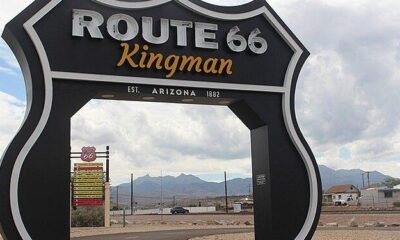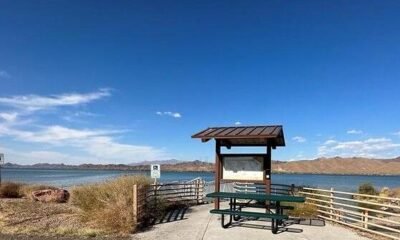Business
Microtransit Moves Closer to Launch: August 29 Deployment on the Horizon

On Thursday, August 29, 2023, the city of Sedona is poised to unveil its new microtransit service, although the launch date remains flexible. This initiative has faced a lengthy two-year delay, attributed primarily to the city’s effort to secure maximum federal funding while ensuring compliance with the Americans with Disabilities Act.
Sedona Transit Administrator Robert Weber highlighted the project’s focus on reducing human interaction, enhancing surveillance capabilities, and increasing the likelihood of future federal grants. The service aims to encourage visitors to park once, thereby alleviating local traffic congestion.
Supply
Weber detailed the complications that led to the shift in vehicle acquisition. “Five months into production after we placed our orders, the manufacturer announced they were discontinuing the product,” he explained. The need for compliance with federal guidelines further complicated procurement, especially following regulatory changes that eliminated previous exemptions for certain components. Consequently, Sedona adjusted its order from the initially planned 10-passenger Dodge Ram Promaster 3500 vans to 14-passenger New England Wheels Frontrunner vehicles, incurring an additional cost of approximately $50,000 per unit.
In light of community concerns regarding the purchase of used vehicles, Weber clarified that federal funding dictated the acquisition process. “The feds effectively bought two of our five vehicles, which wouldn’t have been feasible with second-hand units,” he stated, emphasizing that the new vehicles are fully ADA-compliant and can accommodate two wheelchairs.
Deputy City Manager Andy Dickey added that eliminating ADA compliance to accelerate service rollout would jeopardize future federal funding opportunities. Weber acknowledged the community’s frustration with the delay but affirmed the importance of starting the service correctly.
Demand
Fares for the microtransit service are set at $2 each way, with discounted rates of $1 for seniors, disabled individuals, veterans, and specific health care beneficiaries. No proposal to offer free rides to local trailheads has been pursued at the direction of the City Council. Weber anticipates an average of 150 trip requests per day, a figure derived from simulations conducted with transit software providers.
Despite the lack of historical transit data in Sedona, Weber noted that estimates ranged from 50 to 300 trips daily. Operating expenses for the first year are estimated at $1.1 million, with 34% covered by federal grants. The microtransit system’s cost-efficiency reflects advancements in technology since the 2018 transit plan was established.
To book rides, patrons will need to download two mobile apps; however, a live dispatch office will assist those less acquainted with technology. Weber acknowledged the challenges older residents might face with the app-based system while stressing the importance of maintaining an efficient and user-friendly approach.
The microtransit vehicles will be equipped with eight cameras each, allowing for real-time data collection. “These heat maps will help us analyze user patterns and optimize service,” Weber said. The service will operate with two fixed stops and will not provide curbside service in congested areas to enhance safety and affordability. For just $2, riders can traverse the entire city.
Weber emphasized that one of the main advantages of this service is its accessibility for those unable to drive, particularly the elderly and disabled. He plans to market the service to hotels and businesses, reinforcing its convenience for both residents and visitors looking to avoid parking hassles.
Connectivity
The vision for Sedona’s transit network extends beyond the microtransit service. Weber envisions an integrated system akin to that of Aspen, Colorado, featuring various modes of transportation. Deputy City Manager Dickey noted that while bike-sharing initiatives remain unplanned, the city is open to collaborating with external vendors to enhance local mobility.
Recent tourism studies indicate a low reliance on bicycles by Sedona’s visitors, but Weber remains optimistic about future transit expansion. The overarching goal is to create a seamless transportation experience, linking downtown Sedona with surrounding areas and enhancing connectivity with services like Yavapai-Apache Transit.


















